Odessa’s historic city centre — a United Nations-designated heritage area — came under fresh attack on Sunday, leaving the city’s impressive cathedral partially ruined.
Russia has bombed Odessa nightly for over a week, apparently targeting Ukraine’s import-export infrastructure in the port around which the city grew, but also inevitably bombing civilians as well. The central historic importance of the port makes the close proximity to that facility of the historic city inevitable, and the city’s governor Oleg Kiper said, as well as one person killed in Sunday’s bombings, 25 registered architectural monuments had been hit, including 12 buildings of great historical importance.

Dust covers bent crucifixes used for Orthodox services, as Ukrainians clear away debris after a Russian missile struck the historic Holy Transfiguration (Spaso-Preobrazhensky) Cathedral in central Odesa, Ukraine, on July 23, 2023. (Photo by Scott Peterson/Getty Images)
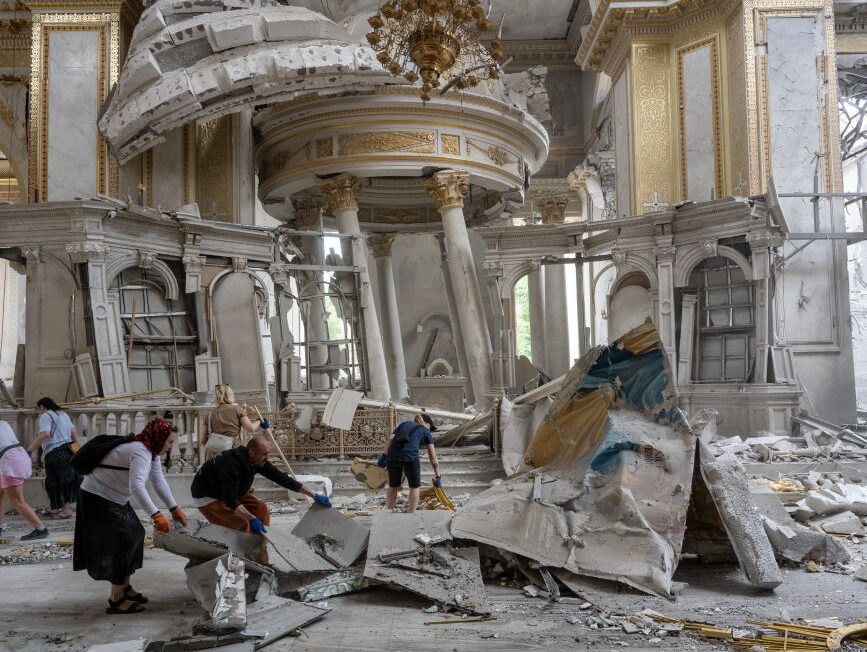
Ukrainians clear away debris after a Russian missile struck the historic Holy Transfiguration (Spaso-Preobrazhensky) Cathedral in central Odesa, Ukraine, on July 23, 2023. (Photo by Scott Peterson/Getty Images)
One of those hit in the UNESCO World Heritage Centre over the weekend is the former palace of the Counts Tolstoy, which was taken by the Soviets in the 1920s and converted into a scientific institute. Its historic 19th-century interiors were seen smashed and bathed in dust in photographs published yesterday.
While Russia bombs U.N.-designated historic areas, a Ukrainian politician has criticised the international organisation for being so soft in its condemnation. Lviv Mayor Andrii Sadovyi said, per Ukrainian Pravda, that it was cowardly for UNESCO to condemn the bombing without specifically naming Russia as the perpetrator.
One building hit in Odessa which has gained more attention than any other — no doubt for the dramatic and appalling images of its broken marble interiors — is the city’s main cathedral, the church of the Transfiguration. Despite its impressive 18-19th-century style Greek Revival architecture, the cathedral isn’t listed in UNESCO’s protection order against Odessa because the church itself is less than 30 years old.
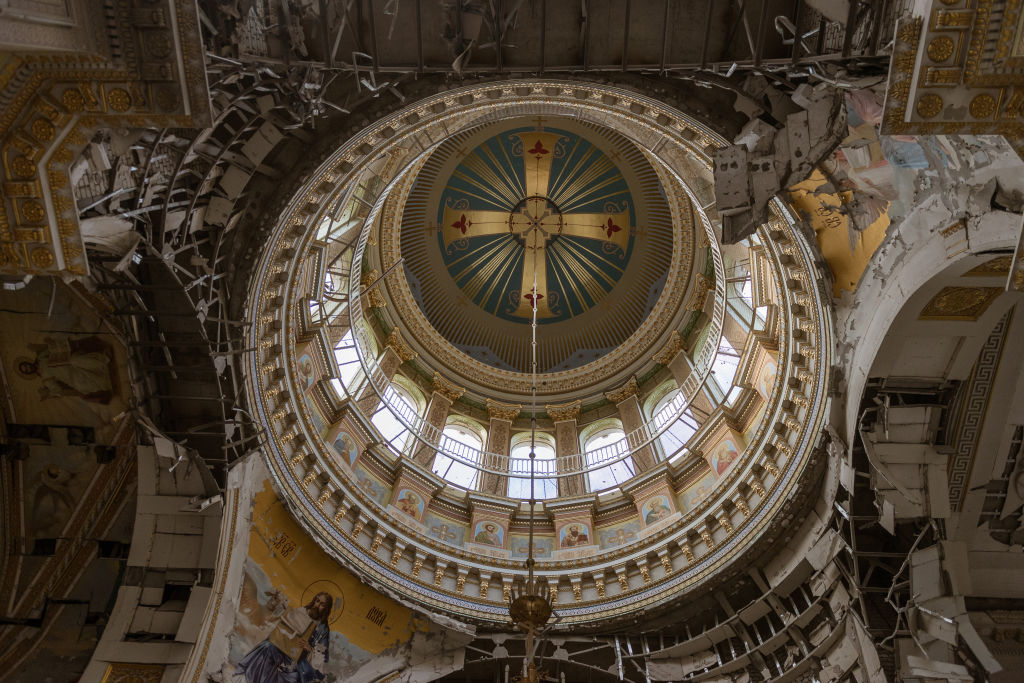
The blast blew highly decorated panels from the transept, revealing the steel structure supporting the great dome (Photo by Andre Alves/Anadolu Agency via Getty Images)
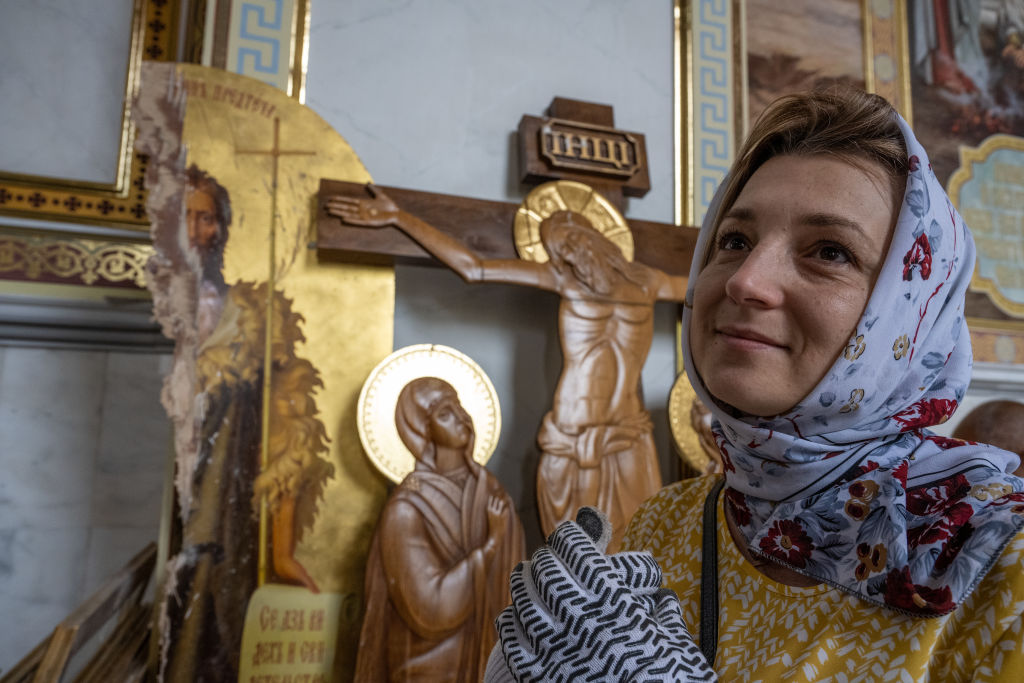
Orthodox believer Olha Golubova speaks about the destruction of her church (Photo by Scott Peterson/Getty Images)
The Orthodox cathedral was in fact destroyed once before on orders of Moscow, when Stalin was pushing to convert the Soviet Union to atheism and had it bulldozed in 1936. The new cathedral was rebuilt from 1999, and the modern method of handing masonry on a steel frame can now clearly be seen in the ruins of the building, including in the arches holding up the great dome and the partially collapsed baldacchino.
In scenes reminiscent of the destruction of Notre Dame Paris, works of art and objects of devotion and worship were carried out of the ruins of the building and piled on the outside pavement.
A report in the Guardian newspaper notes the irony of the Russian strike damaging a cathedral which was consecrated when new by the Russian Patriarch Kirill, a strong supporter of President Putin and of the war itself.
Russia, for its part, denies it bombed the cathedral at all and blames the damage on a fallen Ukrainian anti-aircraft missile.
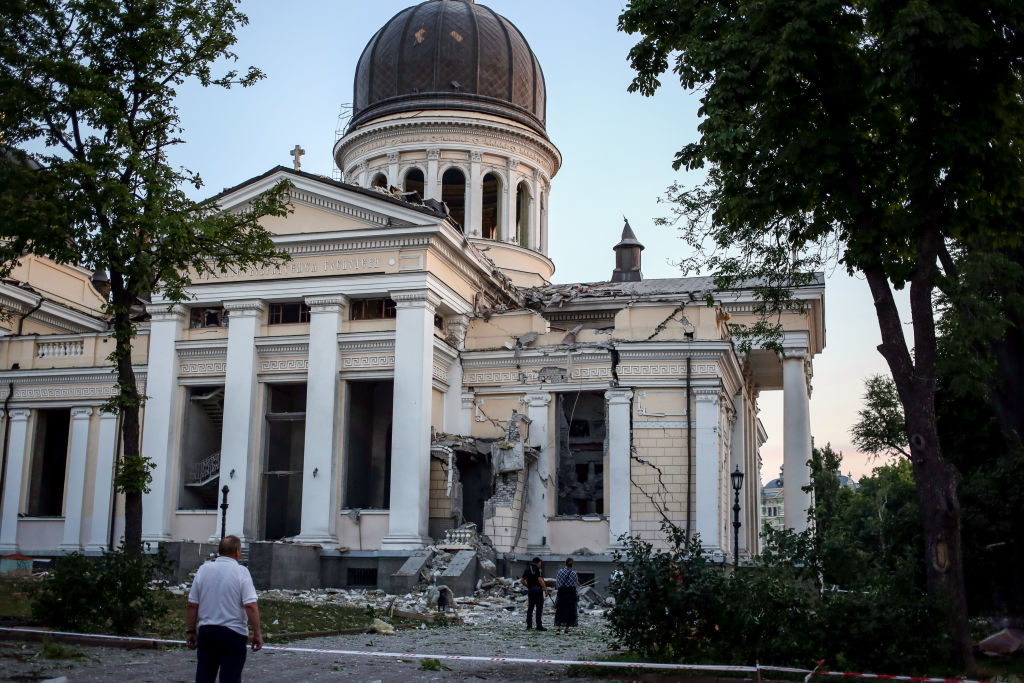
External view underlines the extent of the structural damage to the cathedral (Photo by Viacheslav Onyshchenko/SOPA Images/LightRocket via Getty Images)
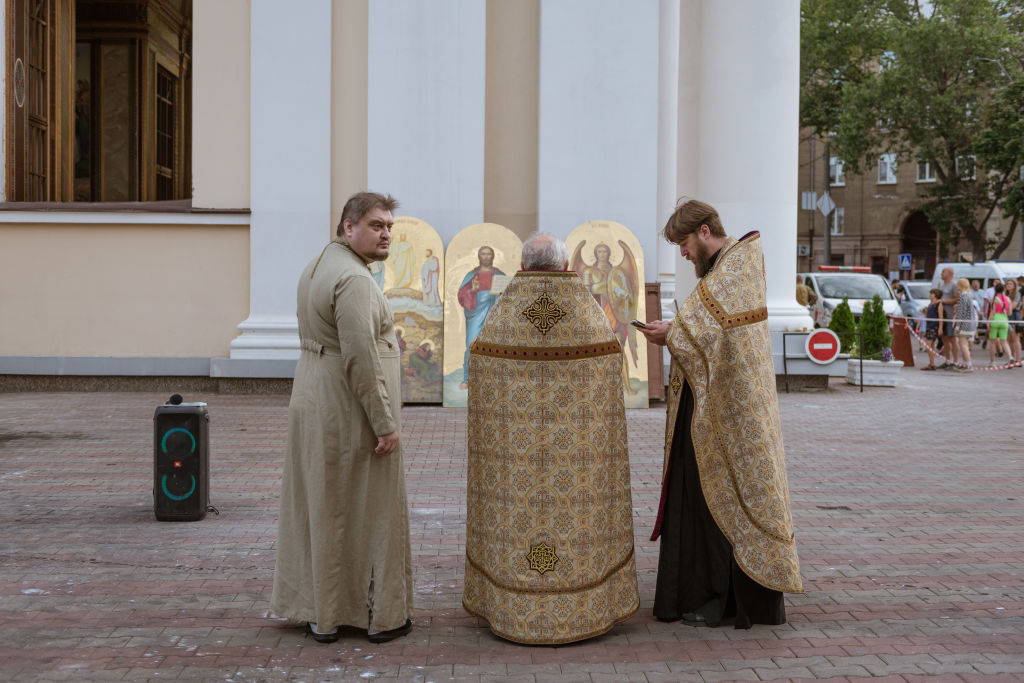
Priest lead the mass in front of the damaged cathedral (Photo by Andre Alves/Anadolu Agency via Getty Images)

Remains of icons and joinery piled on the pavement (Photo by Viacheslav Onyshchenko/SOPA Images/LightRocket via Getty Images)
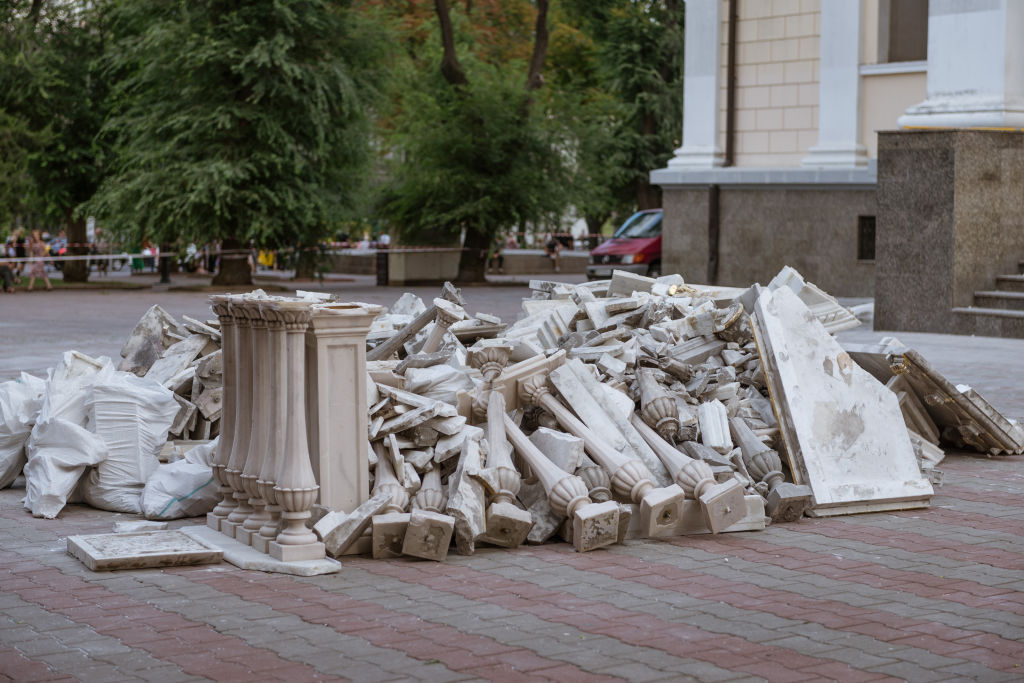
White marble ornaments saved for the rebuilding (Photo by Andre Alves/Anadolu Agency via Getty Images)
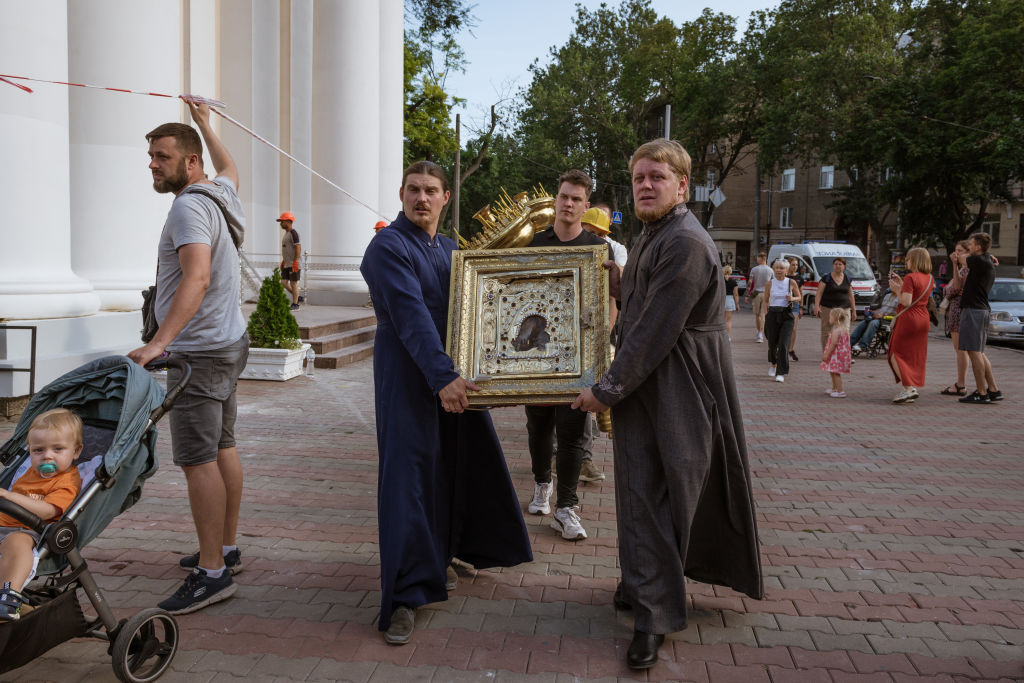
Officers carry the copy of jewel incrusted Kasperovskaya Mother of God icon recovered from the inside after Russian missile strike (Photo by Andre Alves/Anadolu Agency via Getty Images)
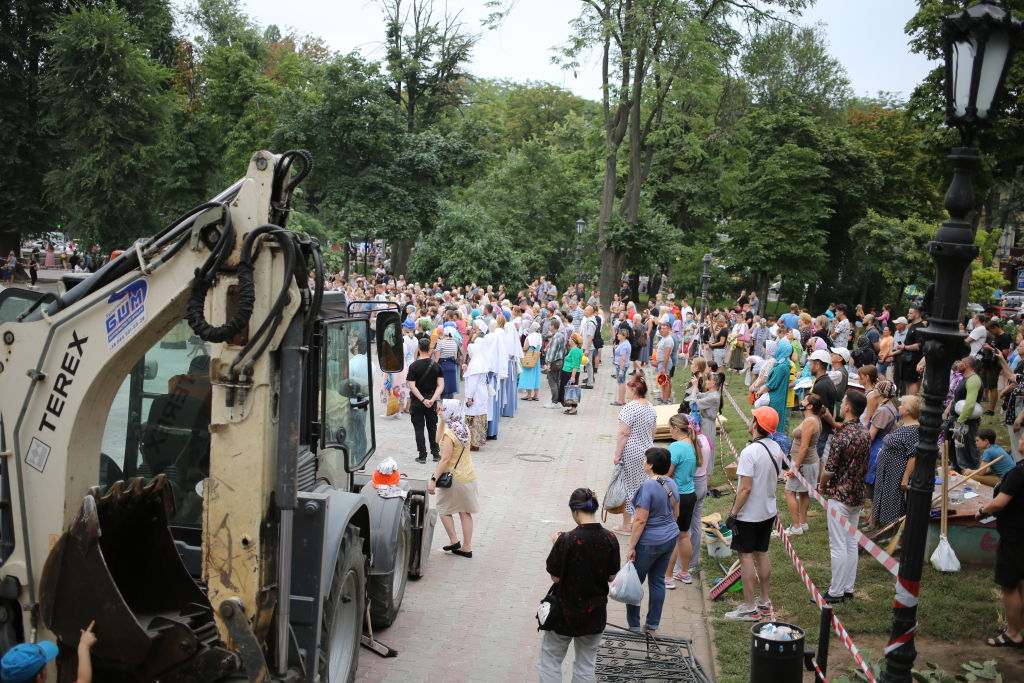
People listen to a prayer service near the damaged Spaso-Preobrazhensky Cathedral (Transfiguration Cathedral). (Photo by Viacheslav Onyshchenko/SOPA Images/LightRocket via Getty Images)

Svetlana Gvozdikova (left), an ethnic Russian woman married to a Ukrainian man now serving in the Ukrainian army, joins Ukrainian volunteers as they clear away debris (Photo by Scott Peterson/Getty Images)
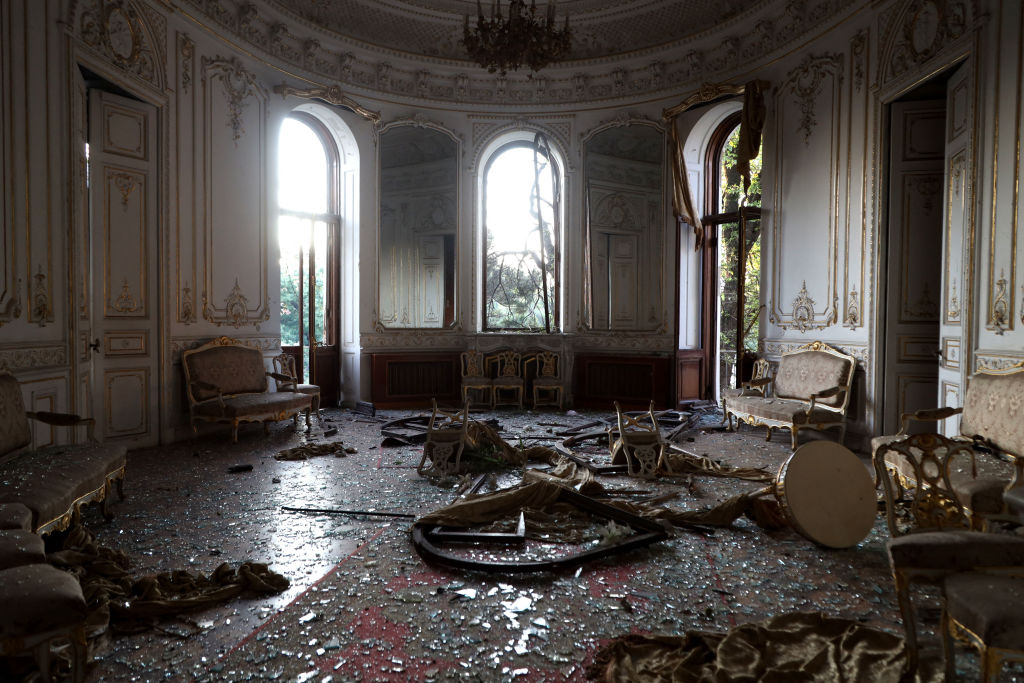
This photograph taken on July 23, 2023, shows the destructed House of Scientists following a missile strike in Odesa, amid the Russian invasion of Ukraine. Russia’s latest missile attack on Odesa left two dead Sunday, wounded many and badly damaged a UNESCO-listed Orthodox cathedral, drawing a vow of retaliation from Ukraine’s leader. (Photo by Oleksandr GIMANOV / AFP) (Photo by OLEKSANDR GIMANOV/AFP via Getty Images)
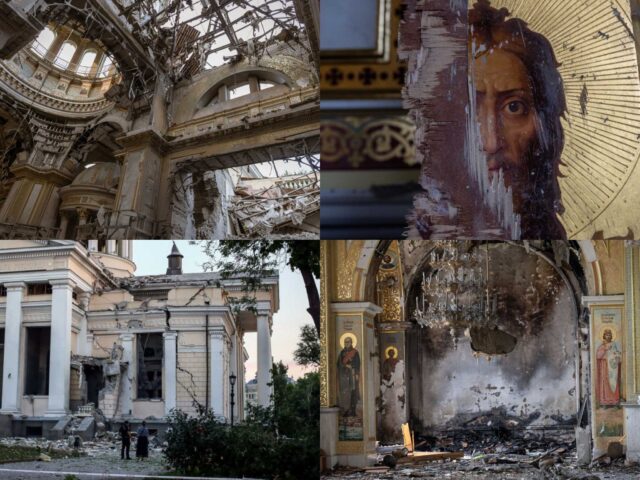

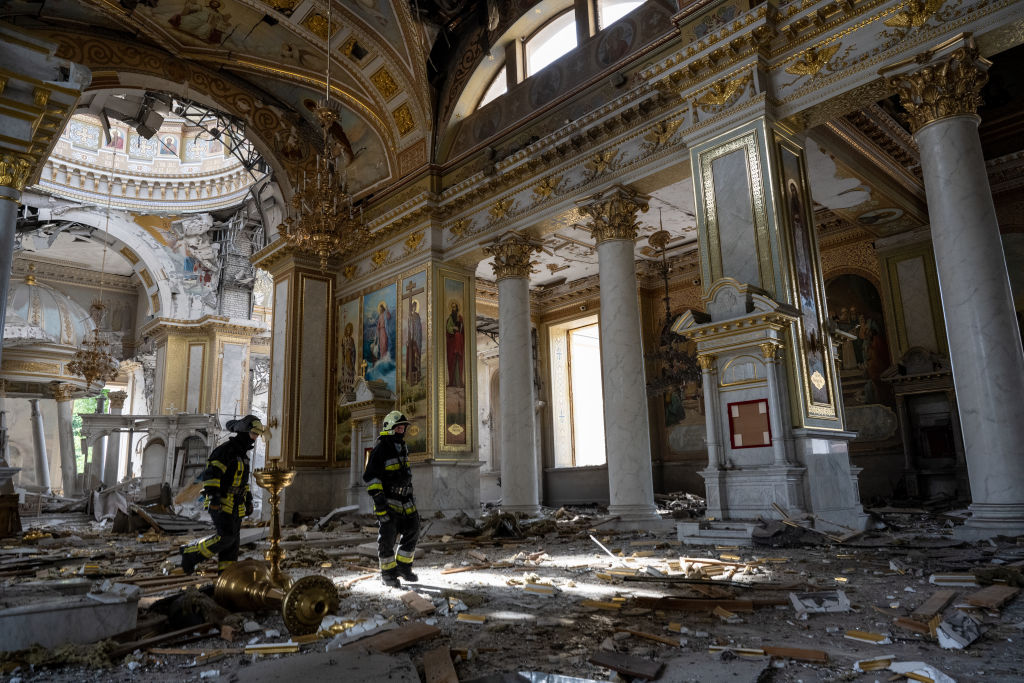
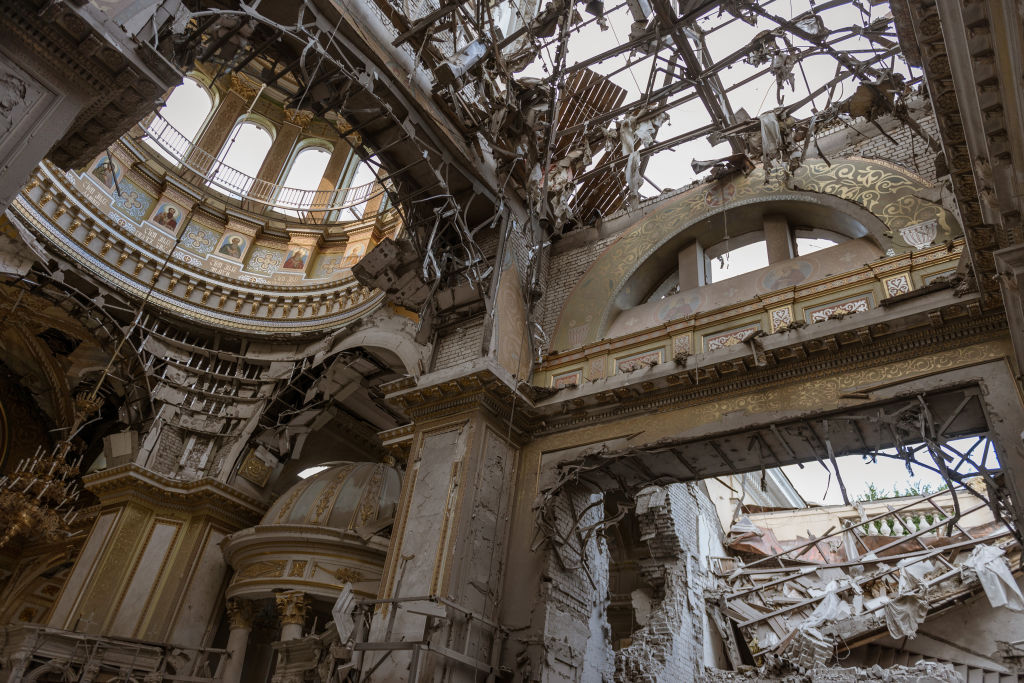


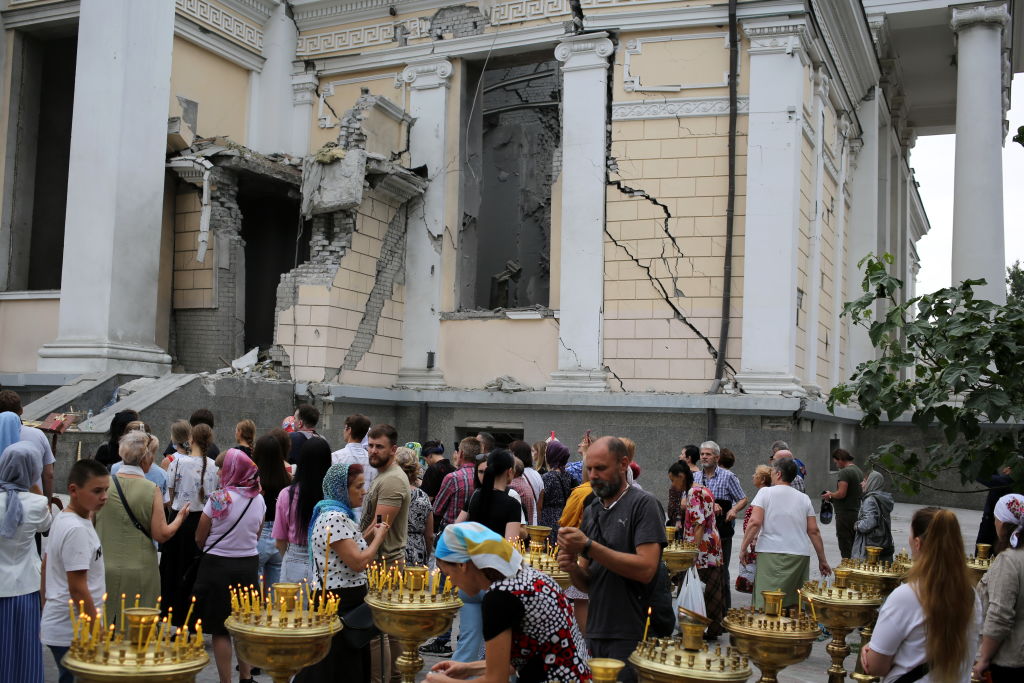
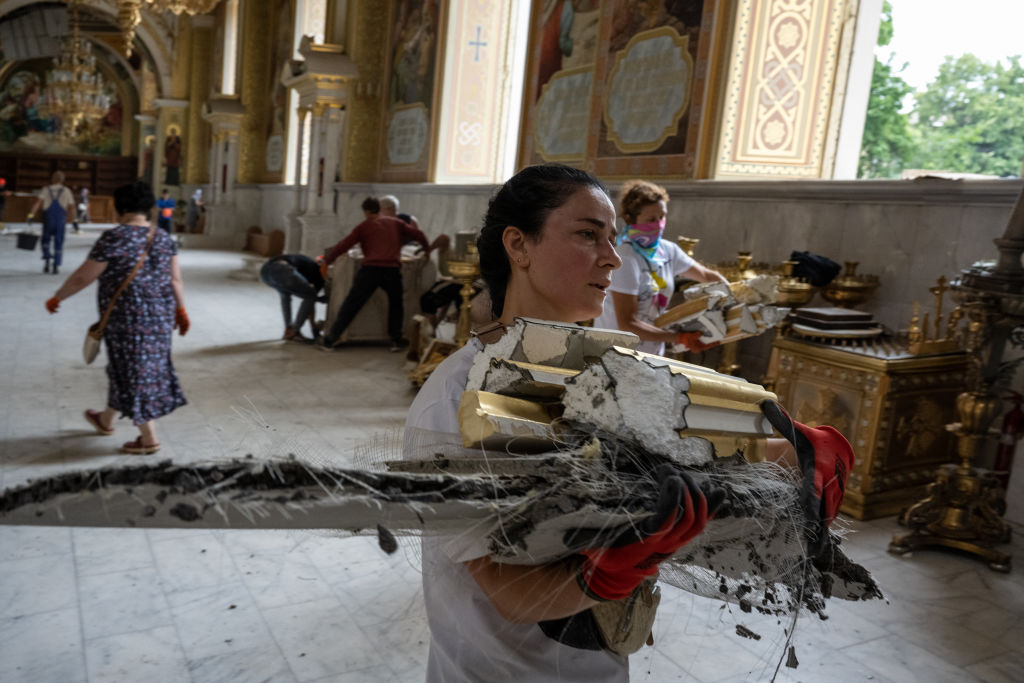
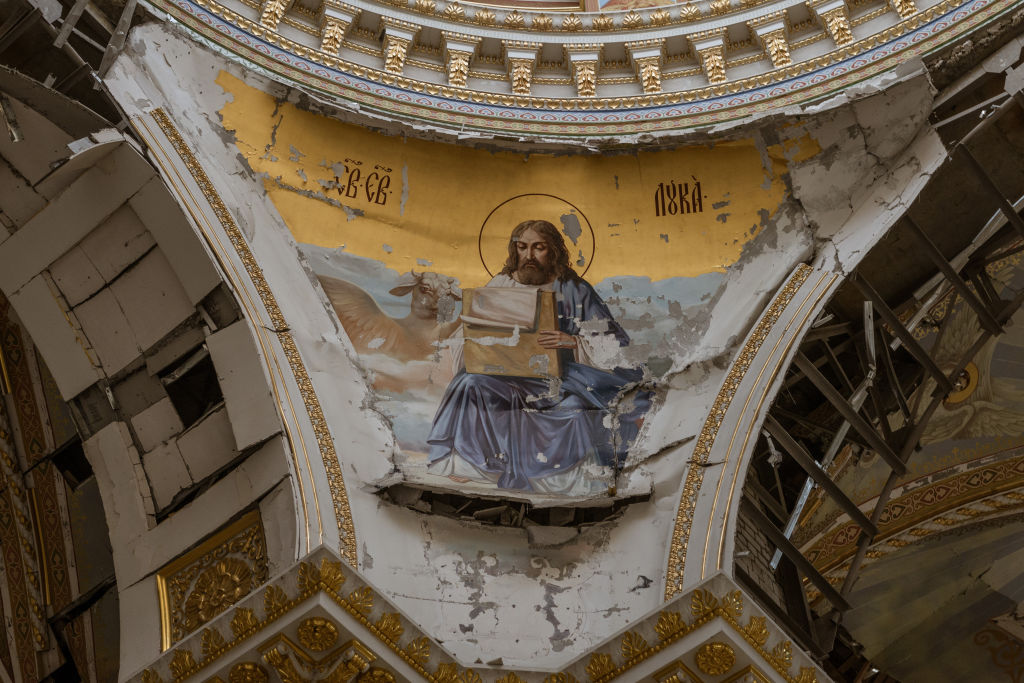
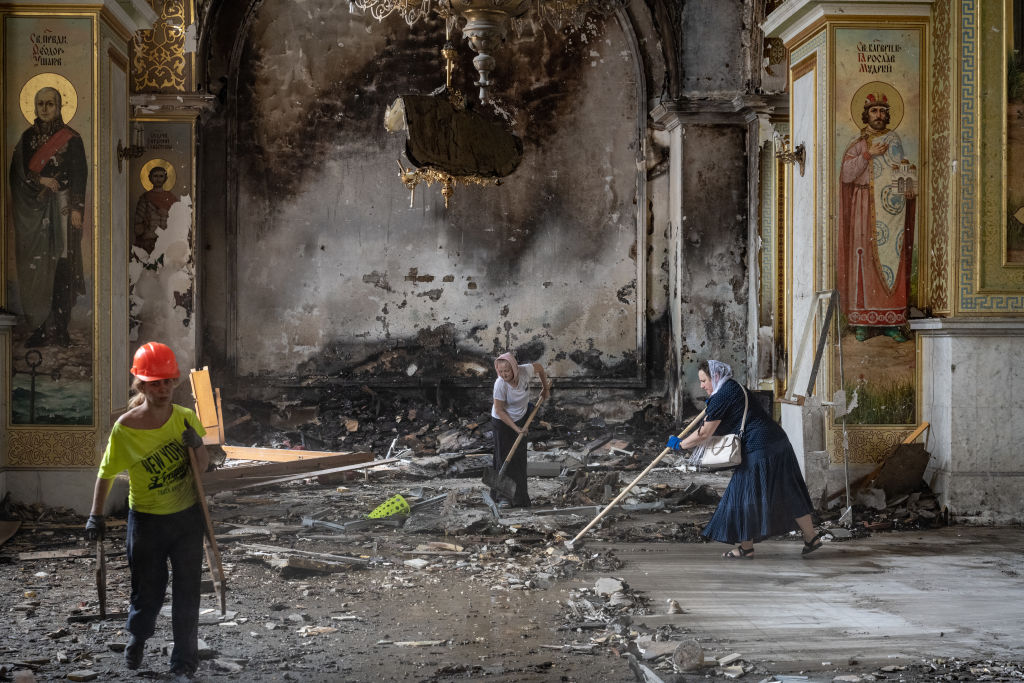
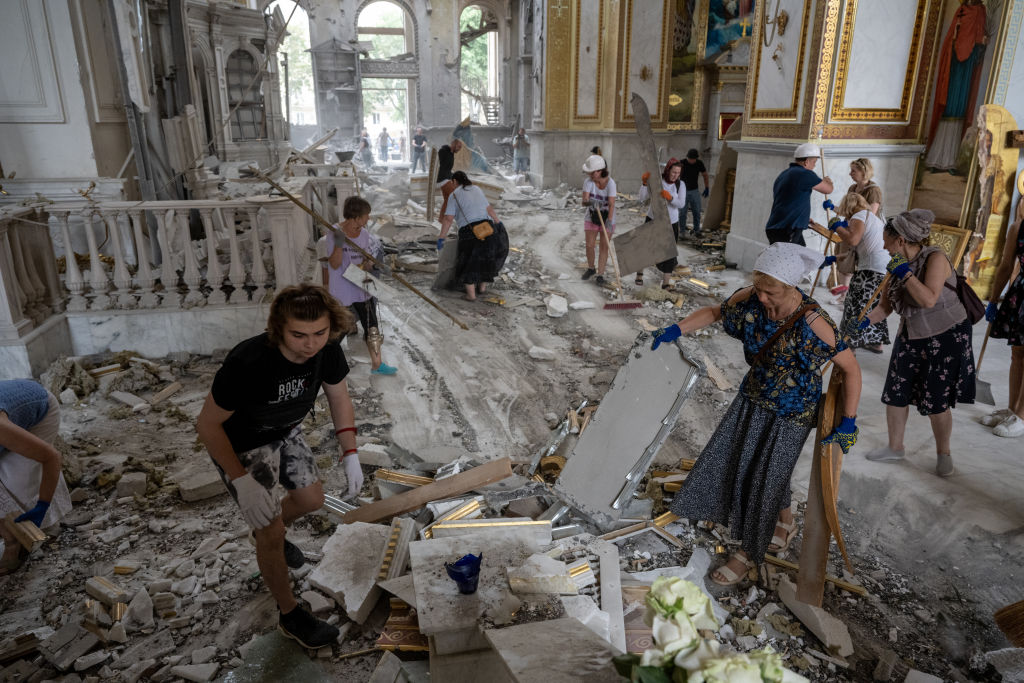
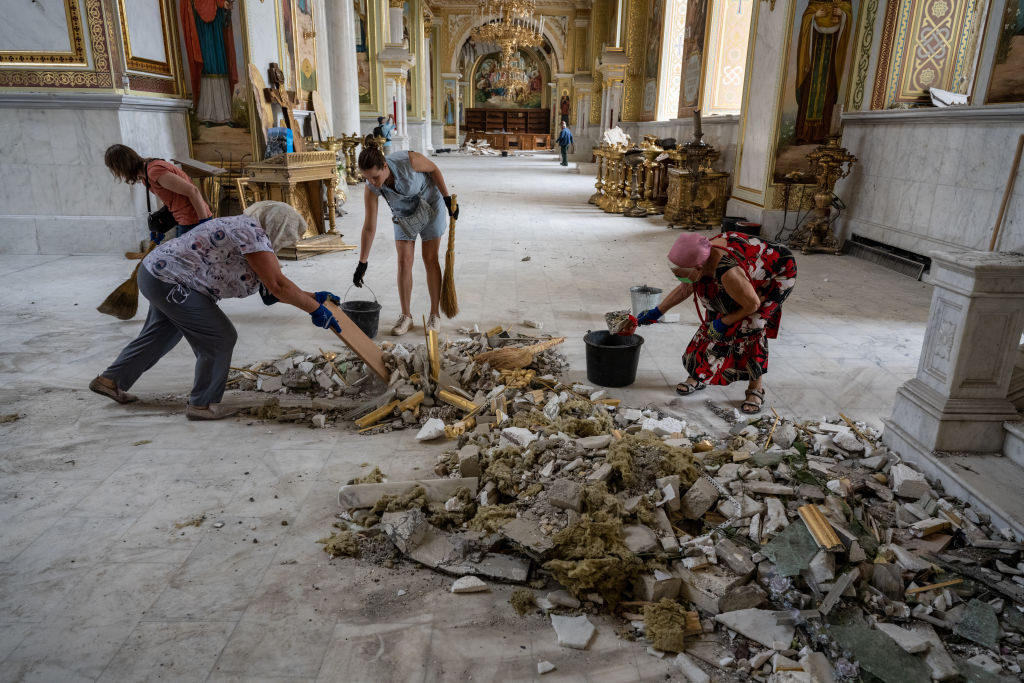
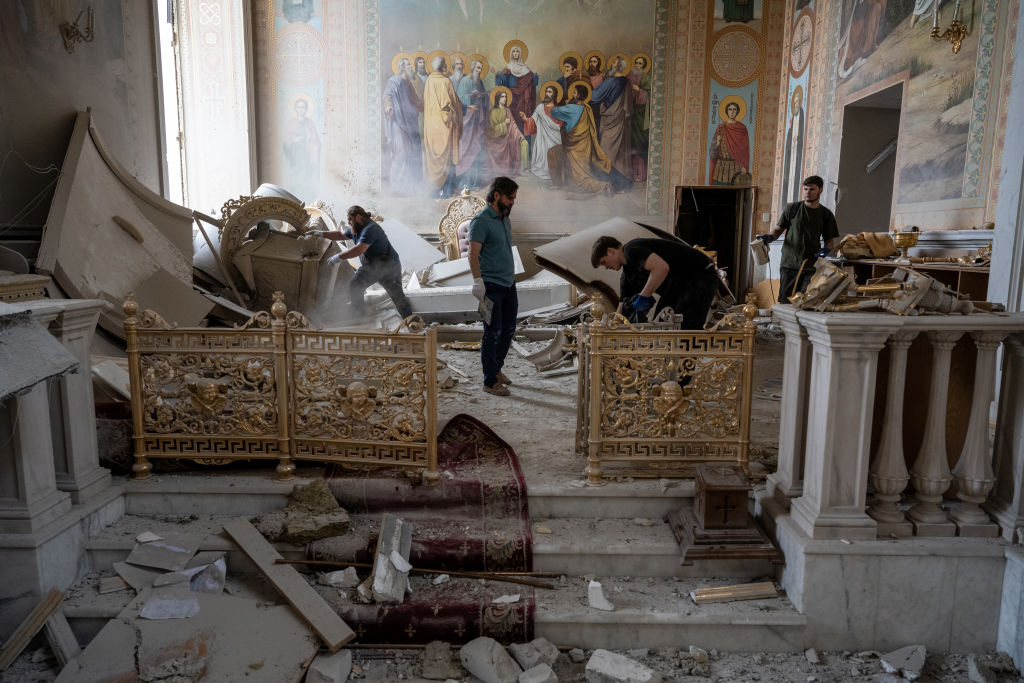


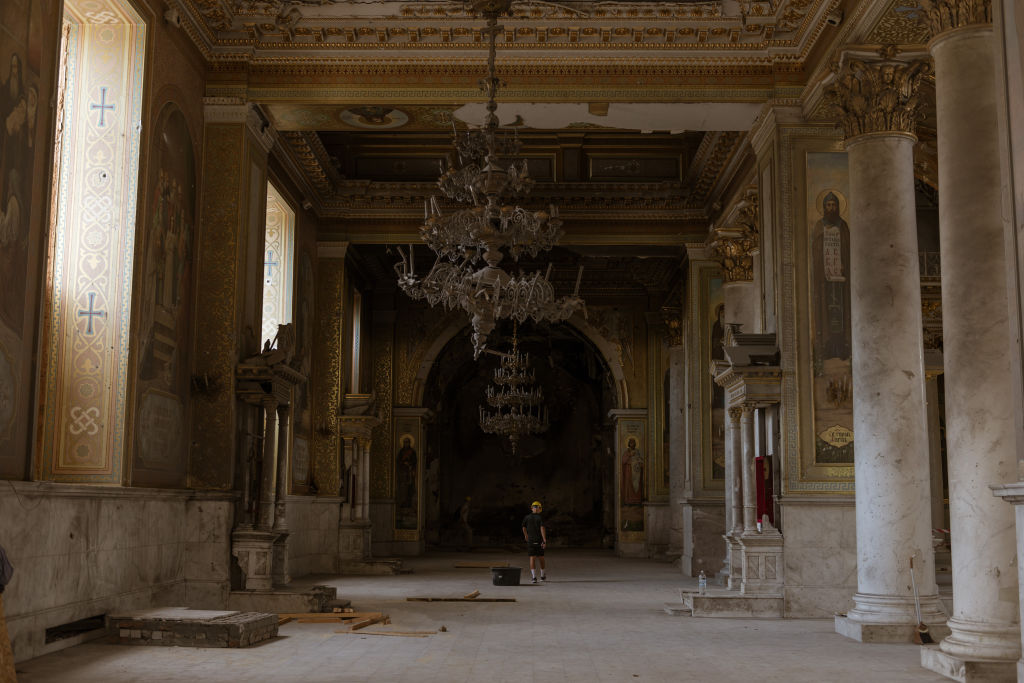
COMMENTS
Please let us know if you're having issues with commenting.